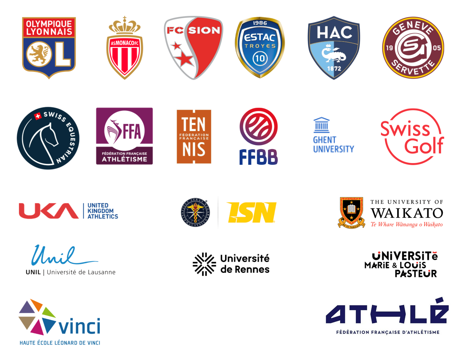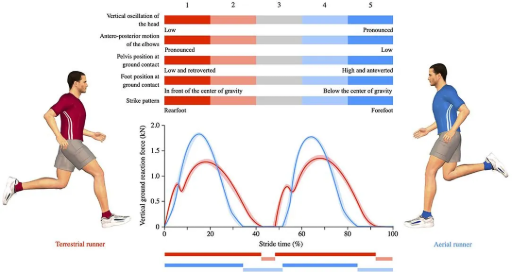About Motor Preferences
Perform as your body wants to! It's easier, more efficient and safer!
What are the benefits for athletes?
The profiling of Motor Preferences™ make it possible to emphasize the physical capacities and natural qualities of an athlete (called motor profile) and to limit training that is far from the athlete's spontaneous qualities (called opposite motor profile or shadow zone) in order to limit the risks of regressing by inhibiting the athlete's natural qualities, which would result in a loss of self-confidence and an increased risk of injury.
How do Motor Preferences™ work ?
Motor Preferences™ work by identifying an individual's unique, natural movement style to create personalized, efficient training plans that optimize performance and reduce injury risk. The system uses scientific data, assessment tools, and expert interpretation to understand an individual's neuromuscular and musculoskeletal structure, applying this knowledge to tailor drills and training to their specific motor profile. This approach recognizes that movement is influenced by both physical and mental factors, leading to a more holistic and effective method for athletic development.

For example, for a right-handed person, writing with the right hand will be natural, easy and fluid, whereas writing with the left hand will be much more difficult, anarchic and will require concentration. This doesn't mean that the person can't write with their left hand. It will just take more time and effort to do so.
An exercise to better understand motor preferences: quickly cross your arms several times. You will notice that it is always the same arm that is positioned in front.
Now cross your arms again quickly, but this time cross them the opposite way.
Have you noticed that this change requires effort and is not
natural. This is exactly what happens when you use your motor profile
with completely natural movements or when you use your opposite profile
which generates more difficulty and therefore more energy expenditure.
They trust Volodalen
Volodalen has collaborated & continues to collaborate with prestigious parners across professional netwoks. Wether with professional clubs, universities or international athletes, Volodalen proudly upholds the highest standards of physcial preparation.
And perform
Tennis: 2 ATP Top 40 players
Wheelchair Tennis: 3× Olympic Champion
Ski Mountaineering: 3× World Champion
Trail Running: ITRA World No. 1
Windsurfing: World Champion
Surfing: World Champion
Fencing: Olympic and World Champions
Soccer: Professional players in top leagues
Marathon: 2h10 runner
Long Jump (Para): 3× World Champion
Mountain Biking: World No. 2
Cycling: Multiple professional riders
Triathlon: Olympic athlete
Water Skiing: Senior World No. 1
Spartan Race: Senior World Top 3
Motocross: 3× Touquet winner
Golf: European Tour event winner
Badminton: National team
......


Motor Preferences™ allow us to individualize the therapeutic and sports management according to the natural movement of each individual.
Which exercises are recommended for your profile?
Any
conditioning drill or technical gesture are feasible for all profiles,
but the prevalences are specific to the profiles. It would be
counterproductive and even dangerous to ask for repeated vertical
plyometrics to a TERRESTRIAL™ profile. It would also be unnatural to try
to repeat slow squat exercises in an AERIAL™. In both cases, the
efficiency would be less and it would increase the risk of injuries. For
TERRESTRIAL™, we will therefore insist on concentric exercises, while
for AERIALS™ we will favor plyometric exercises.
The terms Aerial™ and Terrestrial™ identify the two options that the human body can choose for its self-propulsion. However, it is important to understand that these terms are simply used to simplify the complexity of reality. All Motor Preferences™ exist on a continuum that ranges from one extreme to the other, from the least to the most...
Working with preferences involves precisely determining the position of the cursor corresponding to the player's profile on each of these continuums.
In addition to using either their antero-medial or postero-medial muscle chains, we observe that athletes may also prioritize the antero-posterior or postero-anterior chain. These two chains are linked to breathing preferences. Some will prefer to keep air in their lungs during brief exertion, while others will naturally exhale during this effort. The impact of the mix of these chains is crucial because it allows us to identify if a player is naturally ASSOCIATED™ (prefers a hip-shoulder lines separation with a max approximative angle of 30°) or if he/she is DISASSOCIATED™ (Hip-shoulder lines separation superior to 30°).
By taking these four preferences into account, we then obtain four main groups that illustrate the continuum of the most TERRESTRIAL™ to the most AERIAL™ profiles. The importance of ASSOCIATED™-DISASSOCIATED™ MP impacts the mechanical gesture but also the conditioning. Using MP, the goal is to fit the body needs into the sports needs. In rotational sports, looking for a X-factor increase to gain performance, is a very reductive vision of the human body. It is much more complex.
As proof, if we add other preferences :
- LATERALITY (EXTENSION™ & FLEXION LEG™): How is the body managing its own balance related to the feet?
- LARGE™ - AXIAL™: Does the body prefer to keep masses (arms and legs) closer or further away from its midline?
- MOTOR SHOULDER™: Which shoulder does the body prefer to engage first when accelerating?
Knowing the MOTOR PREFERENCES™ profile of a an individual player allows coaches to individualize the player's conditioning, mechanics, and his/her mental approach to optimize their performance.
The human body is the result of 300 000 years of evolution, guided by the ''optimal survival chance'' logic. It has only the weaknesses we imagine because they don't fit a bio-mechanical vision, a narrative, or a cognitive bias.
Let's change our mindset and understand each individual has their own strengths that can be optimized to perform better and reduce the risk of injury.
.png)
Volodalen Laboratory: Pioneering Motor Preferences Research
Volodalen is a cutting-edge research laboratory specializing in the study of motor preferences and human movement. With over 20 years of scientific research, Volodalen has become the global leader in understanding how individual biomechanics shape performance, injury prevention, and training methodologies.